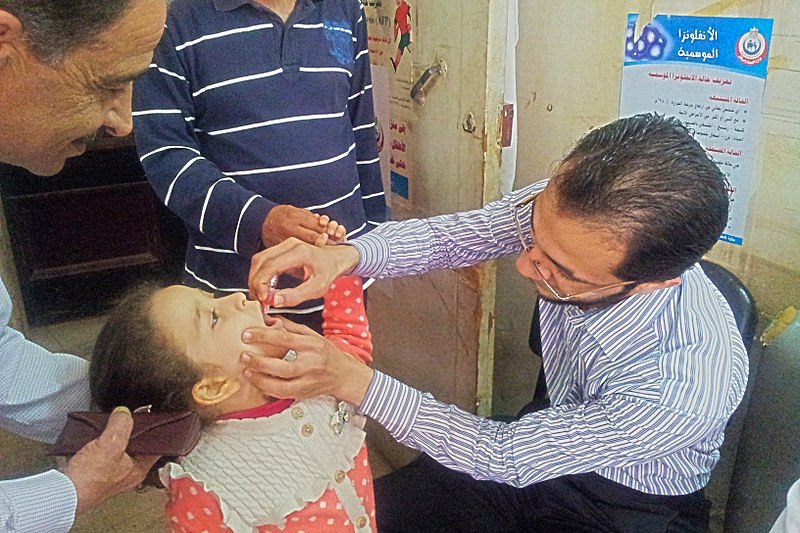The low prevalence of HIV in Egypt is only one aspect of various challenges surrounding high- risk behavior, experts say.
Egypt has a low rate of HIV prevalence in the general population, currently below 0.1 percent, with 3919 reported cases by 2009, and an estimated 10000 people living with HIV in the country today.
The estimated number of people living with HIV is so low that it may seem insignificant; but UNAIDS believes that over the past 20 years there has been an exponential growth in HIV detected cases which have risen by 26 percent per annum. The presence of high risk factors may be a warning bell for a rising epidemic.
The rising number of detected cases is not necessarily bad news. A good deal of it may in fact be due to improved detection techniques and the availability of voluntary counseling and testing across the country, the result of an annual expenditure of LE42 million.
In recent years, Egypt has started focusing on programs targeting those parts of the population who are regarded as being a higher infection risk, including female sex workers, injecting drug users, and men who have sex with men. Risk behaviors are evident across all groups; and infection rates are higher than among the general population. This highlights the risk that Egypt may be witnessing a concentrated epidemic, with the possibility that HIV could spread to other groups in the general population.
Another risk group with limited access to health care is the estimated 600,000 to one million street children living in Egypt. A recent UNICEF study, aimed at detecting high-risk behavior among street children, revealed that between 26 percent and 58 percent of girls aged between 15 and 17 and living on the street in Greater Cairo and Alexandria reported having participated in commercial sex. Condom use is low, and awareness level about HIV transmission is also minimal; although so far there is no evidence of a concentrated epidemic in this group.
15 percent of those tested for HIV at the voluntary counseling and testing centers come from high-risk populations as reported by the government in the latest UNGASS report.
Wessam ElBeih, UNAIDS country officer in Egypt, says the government is currently reviewing its national strategic plan on HIV for the next five years basing its new strategy on the evidence collected so far.
Government and NGO programs are expanding to cover high-risk segments of the population; but due to social stigma, these groups usually remain under the radar and are difficult to reach.
Ragia al-Gerzawy, health and discrimination officer at the Egyptian Initiative for Personal Rights, says that those organizations that dare to work with populations at risk can be counted on the fingers of one hand. Some sections of government are apparently doing their part to further discourage these efforts. There have been many reported cases of social workers being arrested for working with these high-risk groups.
According to al-Gerzawy, many police and government officers believe that commercial sex workers, drug users, and those engaging in "abnormal" sexual practices should simply be eliminated by the law. Hence they persecute social workers for reaching out to them.
“If only the government would issue an official ID card to legitimize the workers' activity, the police would most probably leave them alone,” she says.
Al-Gerzawy adds that there are still many instances in which the rights of those living with HIV, especially among the risk populations, are not guaranteed. In 2007 the death of an HIV positive woman attracted much attention. Her death was attributed to negligence by the medical staff at the Abbasiya Fever Hospital in Northern Cairo. Staff reportedly refused to provide her with the care she needed because she was HIV positive.
Al-Gerzawy says cases in which HIV positive patients are denied care were and still are quite common, especially in the cases of invasive medicine, such as surgery or dental care. Many doctors refuse to treat people living with HIV for fear of being infected themselves. Moreover numerous public hospitals lack basic hygienic tools, like double layered gloves that would protect the staff from the risk of infection.
Doctors are compelled not to refuse care to patients only by their code of ethics, not by law. This excludes emergency cases in which they are punishable by law. Legislation is needed to compel medical staff to treat HIV positive patients in the same way as others, according to al-Gerzawy.
Other challenges remain. According to ElBeih, there is a need to reduce some punitive laws, like travel restrictions, that contribute to the further marginalization of those living with HIV, and jeopardize sound public health measures. Also, some firms refuse to employ HIV positive people; although there is no risk of the infection spreading by sharing desks or pens.
Among the general population only 18.3 percent of males and 4.8 percent of females aged 15-24 show a comprehensive knowledge of HIV modes of transmission and prevention as reported by the latest demographics and health survey in 2008. Low levels of awareness pose a potential threat for the spread of the infection amongst the general public.
Some argue that the conservative culture and strongly held religious beliefs of the Middle East are reasons for the low presence of HIV in the area, but ElBeih warns that there is no such thing as a culture that is immune to HIV. HIV is a virus that is transmitted through unprotected sex and infected blood. If risk behavior exists then there is the possibility that virus may spread. Studies have shown that such risk behaviors do exist among the Egyptian population.




